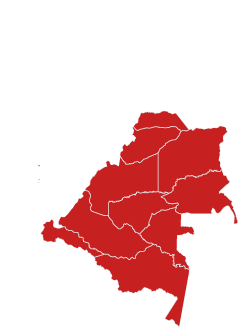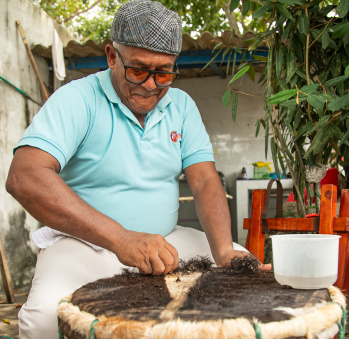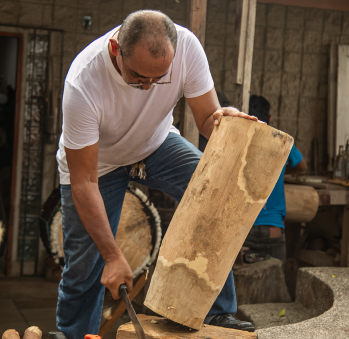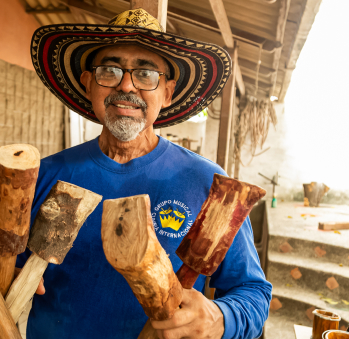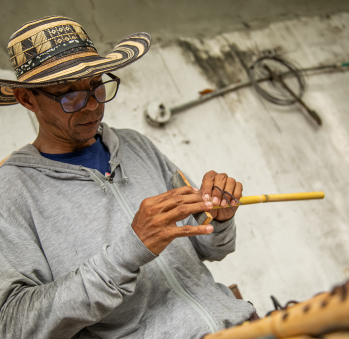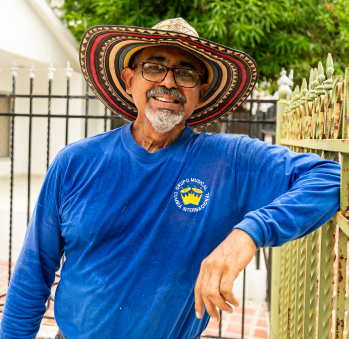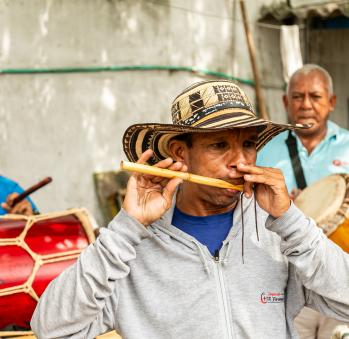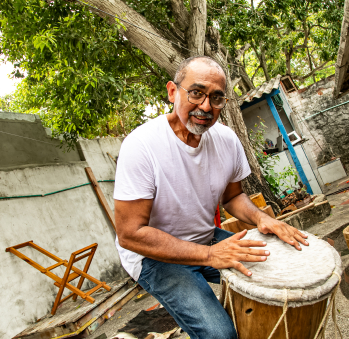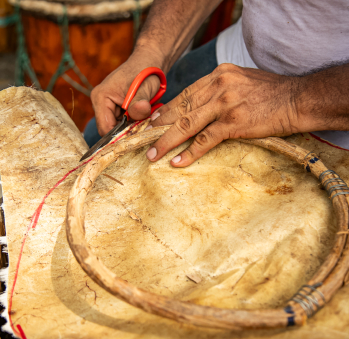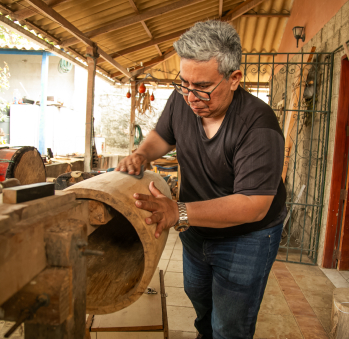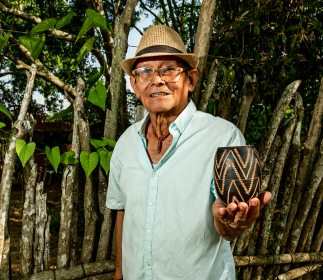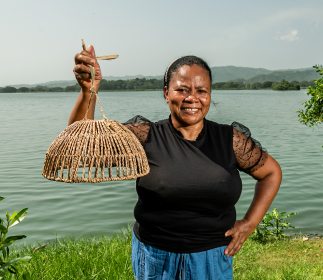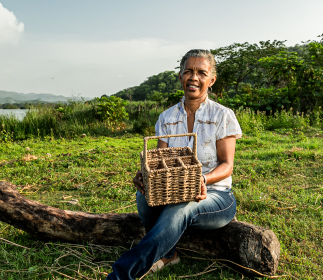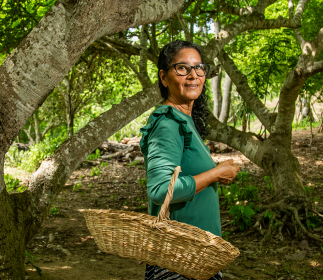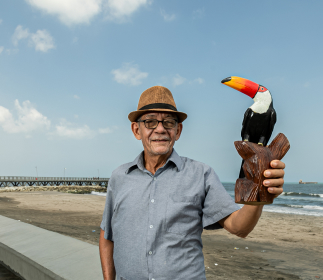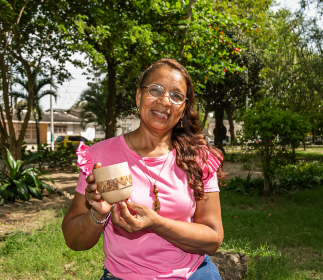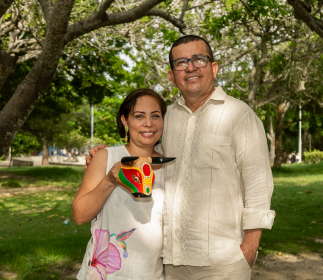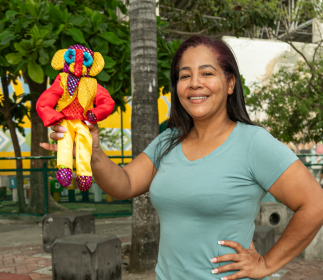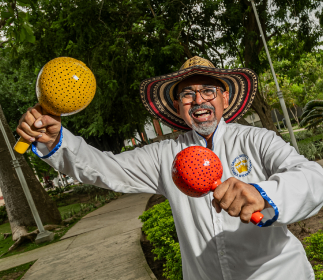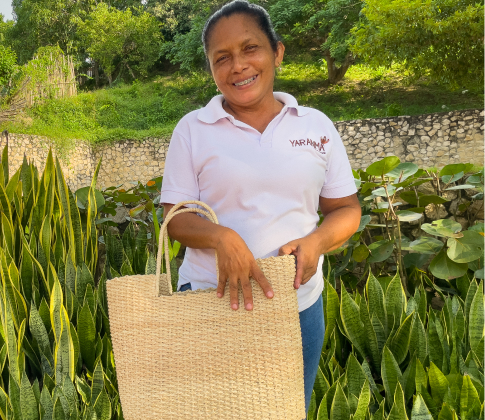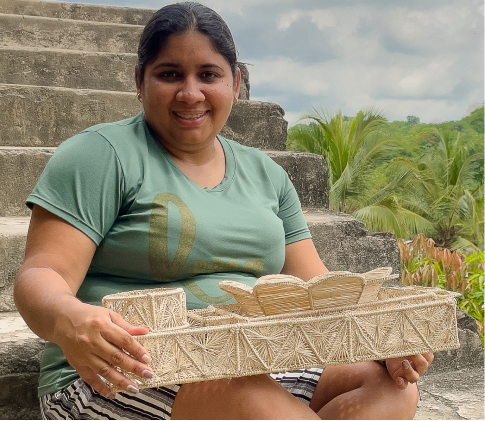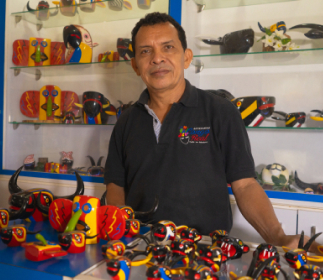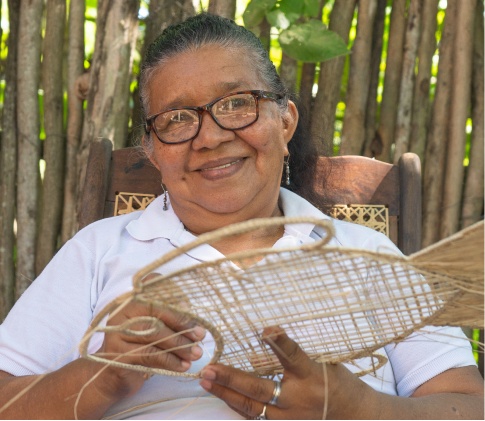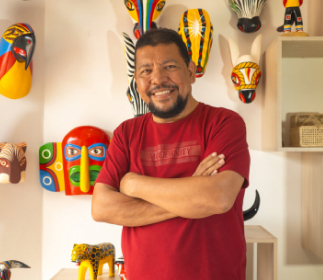Edgard Saez
Taller: Fundación tambores comunitarios a la calle
Oficio: Luthería
Ruta: Ruta Atlántico
Ubicación: Barranquilla, Atlántico
AGENDA TU VISITA
calle 79a #38-53, Barranquilla, Atlántico
3017811518
edgardsaez62@hotmail.com
Edgar Saez crafted his first instrument when he accidentally dropped the pair of maracas his father had brought him. He asked his older brother for help to fix the broken maracas because his father would return on Friday and he couldn’t, by any chance, let him see them broken. So, his brother taught him how to craft them, and he diligently followed each step. From that moment on, he knew he wouldn’t suffer anymore when a pair of maracas broke. Perhaps because of that, or perhaps because his father brought him maracas instead of a drum like he did for his brothers, or because his mother is a mokaná from Tubará, where calabash has been used in crafts for years, his specialty became the maracas of Atlántico. He knows that they are characterized by their fifteen-centimeter diameter and their 330 grams of capacho or chira seeds, and that’s why they can accompany the dominant sound of the carrizo flute in the traditional music of Barranquilla’s Carnival. He also knows that left maracas are played differently from right ones.
Those first maracas with which his father unknowingly dictated the destiny of his craft were brought from one of his many journeys. Néstor Ananías, a black local expert from Ciénaga de Oro, worked opening trails with a machete to install Telecom antennas and repeaters in the Sierra, and according to Edgar, that’s where he got the skill to use the machete with which he carves and shapes his drums. And the love for his art, that particular kindness of the artisans, came from his mother’s side, Hilda Mercedes Castro, a mokaná from Tubará who worked in tailoring for years and with whom he was very close in his childhood, probably because he was the youngest of five sons.
Many things had to happen before Edgar became the well-known instructor of instrument making at the District School of Art in Barranquilla he is today. He pursued degrees in foreign trade and business administration before graduating in accounting and specializing in financial analysis. Then, after thirteen years of working at the Banco Cafetero, he was laid off along with the other nine thousand employees who lost their jobs due to the bank’s liquidation, and he had to reinvent himself. He had already decided to return to what he had done before, to farm work and the music he had known thanks to his father, when he had to face cancer. It left him confined to a chair for three years. Fortunately, he emerged from that trial stronger, with an immense desire to devote himself to instruments.
And if he could do it, it was thanks to the opportunity he had in the seventies to learn the secrets of Paulino Salgado Valdez, better known as Batata, the best drummer in San Basilio de Palenque. With him, he learned to measure carrizo and millo flutes according to the spans of his hands, and the lower openings of his drums according to the measurement of his closed fists. He learned that if the bodies of the tamboras, the happy or female drums, and the llamador or male drums have exact measurements, it’s because the sound waves need enough space to mature inside them and reach the highs and lows that the performer plays. Although his specialty is calabash maracas, Edgar recites the peculiarities of the drums, guacharacas, flutes, and even the drumsticks he makes, like commandments. In his workshop, located in his own home, he welcomes musicians from across the city who come seeking raw materials or advice, and his students from the District School of Art, to whom he imparts all the details that a luthier should know, details that he shares with anyone interested in receiving them with his characteristic enthusiasm and dedication.
Artesanías
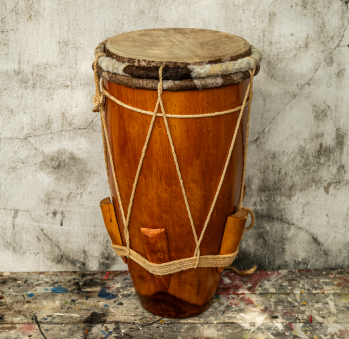
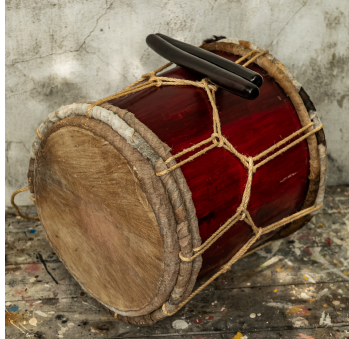
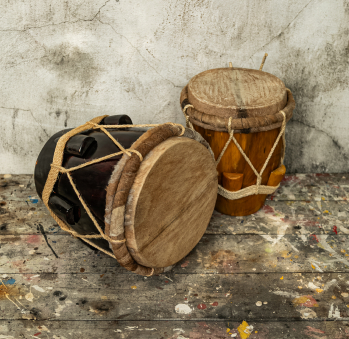
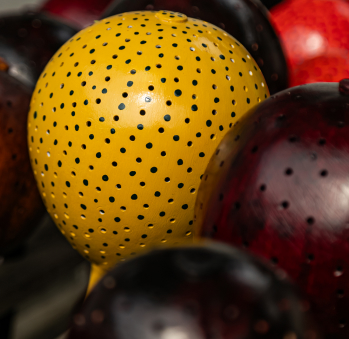
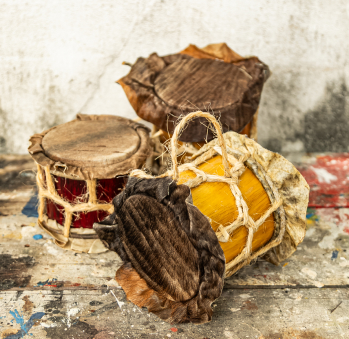
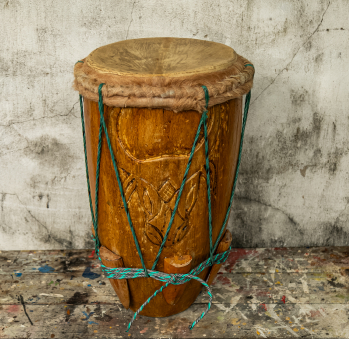






Artesanos de la ruta
Artesanos de la ruta
No puede copiar contenido de esta página

